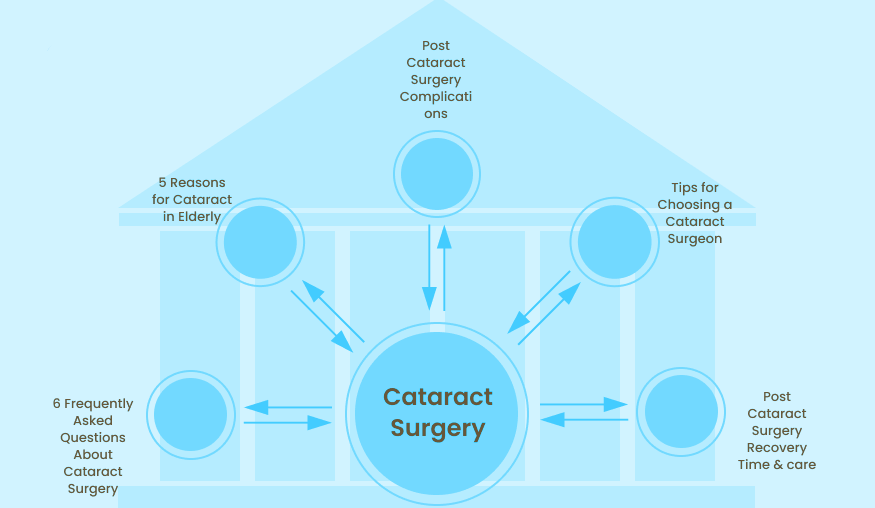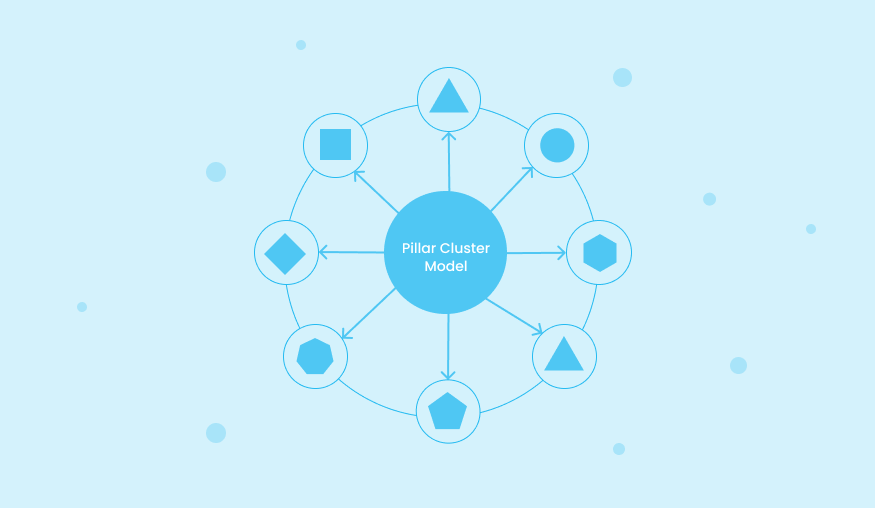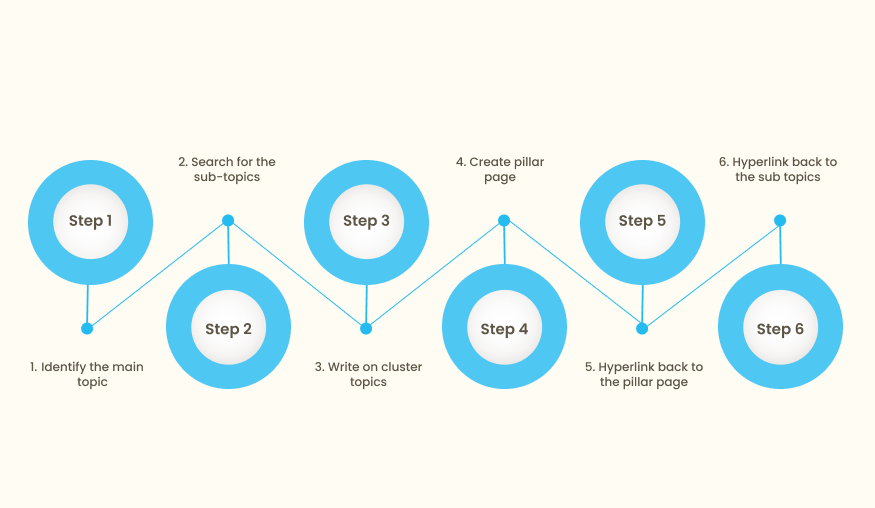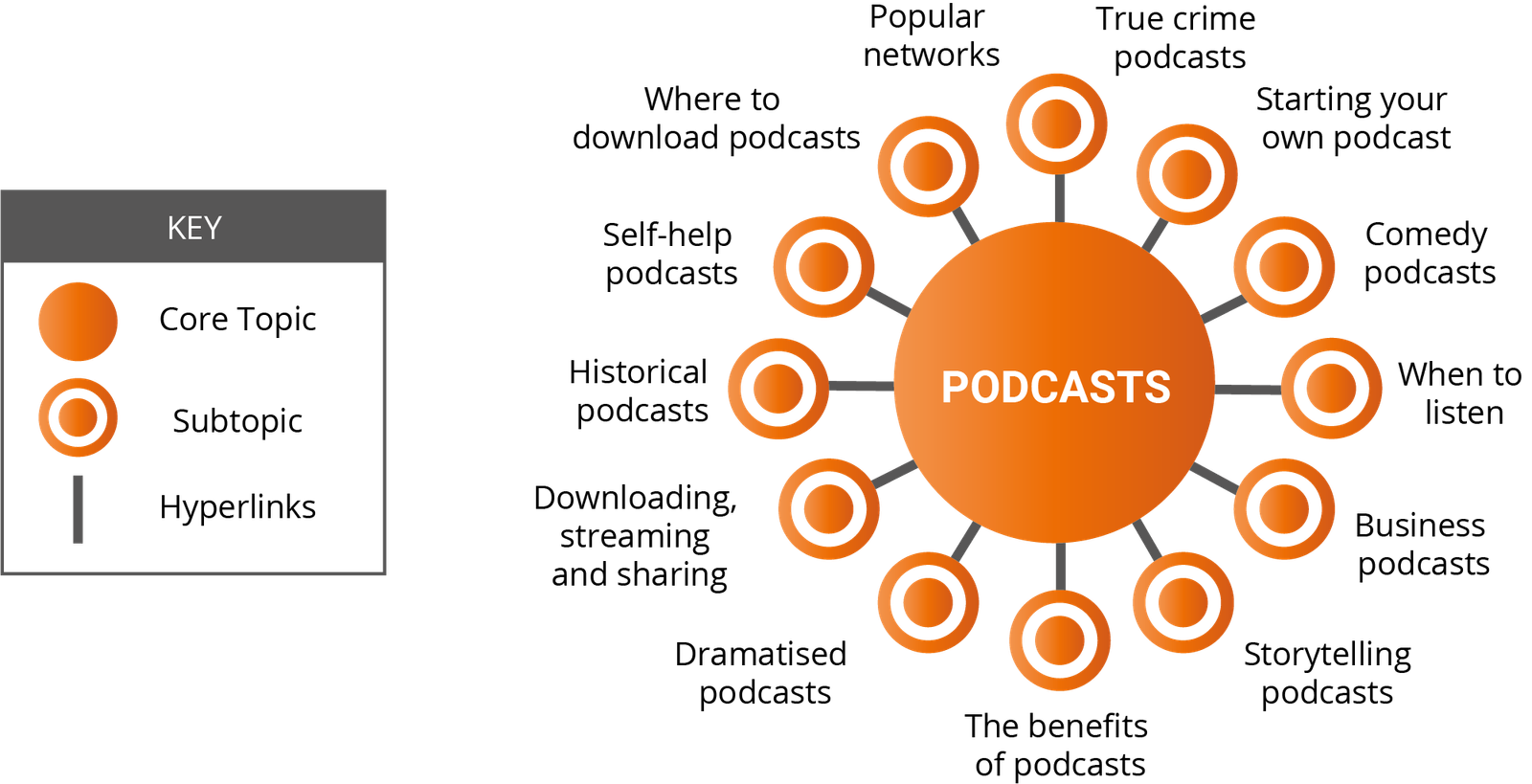Search Engine Optimization has and will always remain in a state of change. No expert can actually claim mastery over the dynamics of SEO due to this state of change. Search engine algorithms undergo periodic updates, and the manner in which users search also continually changes. In the midst of all these changes, link building and content continue to be centric to SEO, despite the changes.
In this context, a good strategy will be to rely on these two pillars, to enhance web traffic to your website and various pages of the site, and can push your site’s search engine rankings higher. This, however, can be achieved only when strategies and actions do not violate any search engine guidelines.
Alright, How To Make It Tick?
It’s actually pretty straightforward – just focus on the Pillar cluster content strategy.
Throughout this article, you will receive useful information about the user pillar cluster model and winning tips on how to use this effectively.
So, What Exactly Is A Pillar Page?
A Pillar Page is essentially a collection, like a library of separate landing pages about a specific topic. This also applies to hub pages and it is unique in the manner in which authority is established. For instance, it encompasses the subject in a broad and extensive manner and it is also direct and expertly focused on the subject.

A pillar page essentially creates an ecosystem where there are extensive supportive resources; for instance, blogs, guides, and other artifacts and informative content that educate visitors.
The pillar comprises little dots like this that are all interconnected and linked to different landing pages on the site. This is then stitched together with link building and creates a cohesive plan.
What Are The Different Pillar Pages Types?
There are three different Pillar pages – 10X, resources, and subtopics. Here is a closer and granular look at each type.
Pillar Page 10x
This refers to a single webpage that offers detailed information about a specific topic. This page is actually elaborate, and resourceful when compared with others. You could also compare this page with an eBook.
Pillar Page Of Resources
This refers to page of resources that comprises internal as well as external links. The primary aim of this page is to list out links about a specific topic.
Pillar Page Of Subtopics
This refers to a page comprising different sub topics within the niche area of your expertise. For instance, the issues that your product/service solves, and this is more like thought leadership expertise.
What Should Be The Ideal Length Of A Pillar Page?
Well, that’s actually difficult to answer. There cannot be a fixed length, or ideal length. The content that is required to make the page resourceful enough and detailed, will determine the length of the pillar page. Okay, let’s assume you insist on some ballpark, something to work around – you could consider 2000 pages as the minimum length.
It is important to bear in mind that pillar pages do not work in isolation, and depend on cluster pages.
Okay, So What Exactly Is Cluster Content?
You could consider cluster pages as resources that determine the manner in which your strategy works. Let’s drill down into cluster pages, beginning with Cluster content.

This refers to the content framework that you create around the pillar page. When the content is strong you can then put in a good interlinking strategy, achieving dual purposes. For instance, you can get your visitors as well the search engines to treat you as a reliable source. When you successfully position yourself as an expert, and a trusted source, your search engine rankings are essentially put on steroids.
Zeroing In On Cluster Topics
It is necessary to note that cluster topics are not an offhand method, but a purposeful with high relevancy. You need to pick topics that are informative and interesting at the same time. As this is important it is necessary to have a good plan in place to identify the right topics. Here is a step by step approach that will help you.
Create A Buyer Persona
You are well aware of design thinking and how marketer build user persona of the target audience. Similarly, you need to build buyer persona, and this should not be on the basis of assumptions about a buyer, but should refer to actual users.

Once you get to understand your buyer better, you will be better placed to come up with a suitable content strategy. Analyze buyer personas in a detailed manner – for instance, is your buyer the actual end customer or is your buyer CXO level in an organization?
This could be the first step in understanding your target audience better, and building the right content strategy.
Keyword Research
This has always been an intrinsic part of SEO, and it is all the more important in topic clusters. It is necessary to first narrow down the list of keywords that are relevant to your area of operations. This will help you compile a broad outline of content that will add value to your users.
You could look at effective and simple to use tools such as Google Trends and Google Keyword Planner. This will help you perform keyword research that is relevant to your expertise.
Periodic Content Audit
Content is not only about crafting new artifacts. You may need to refresh, revise existing content. Unfortunately, a large section of clients seem to be unaware of this or neglect this altogether. A good SEO expert will tell you that you need to carry out frequent content audits that will help you analyze the gap in content. You could revise content accordingly to plug this gap and create a refreshing experience for readers and visitors.
Remember, a website that is content heavy, needs proper and detailed audits, conducted frequently and this will help narrow down your content clusters to a niche.
Role Of Topic Clusters On SEO
As outlined above, topic clusters have an important role and contribute effectively to the pillar cluster model. Here is a look at how these clusters have a role in the success of your SEO practices and strategy.
Relevance
To put this in context, topic clusters are actually different nodes that intersect, and come together relevantly. The purpose is to be a beacon to search engine bots understand the framework, the area of expertise, the niche and the manner in which the content is structured within the framework.
Expertise, Authority, Trust (E.A.T)
Search engines work with highly advanced algorithms, and this actually determines the quality of the content and the value addition. Website rankings hinge on three important factors – expertise, authority, and trust.
When you have the right clusters of relevant content, the spotlight is turned on these three factors, helping achieve better search engine ranking.
Improve User Engagement
One of the main purposes of Pillar clusters is to attract increased footfall, and induce the visitors to spend additional time on pages within your website.
When the information is rich and useful, you will reap the benefits of increased dwell time and higher click through rate.
Enhanced UX And Better Rate Of Conversions
Another important outcome of Topic clusters is the ability to create content that is riveting and engaging. After you have worked out buyer personas, and identified topic clusters, you be better poised to create content that highlights and addresses pain points that are relevant to the area of operations.
Your visitors will experience a better, and completely refreshing experience, which will in turn help your business achieve better profits through increased conversion rates.
Why Interlinks Are Important In Pillar Cluster Model?
While it is undisputed that content is critically important, links are qual in terms of importance in the pillar cluster model. Links guide users to the specific cluster pages. In the absence of these links, you will not be able to get your users through a funnel. Additionally, and importantly, these links enable search engines to crawl through your landing pages and index them accordingly on the database, before ranking the pages relevantly.
Therefore, when this part is not done right, all your efforts are actually nullified.
It is therefore important to link the cluster structure correctly, so as to create a cohesive and clear path for users and search engines. To put it technically, these links actually pass on authority to next page, when users navigate through pages.
The Right Practices When Interlinking Cluster Pages
With that information behind it is necessary to follow certain practices to get the best out of interlinking cluster pages and the pillar page.
Linking To Images Is Not Best Practice
Links of anchor text should be highly relevant and contextual in phases or sentences. When it appears forced or unnatural, it works against your efforts, and is clearly visible as a ploy.
Linking images is not best practice as this does not technically give you the desired outcomes from this part of SEO practice.
Deep Linking Is Good
User behavior involves search for additional resources when the same has not been explained properly on a page. In such circumstances, it is necessary to link to content that is not actually easily visible. It needs to be positioned as something that is important and driven by a particular search for special or additional information.
The idea is to make the result of this link navigation more interesting and engaging.
Restrict Total Links
Given that you are encouraged to have more links on pillar pages, bear in mind that it is not always the number of links that count.
When you have far too many links, this may not be the ideal user experience, and could affect search engine rankings in a negative manner.
Create Internal Links
Links are bridges to cluster pages, and it is vital to ensure that they are relevant. Take time to fix all broken links and work towards enhancing the user experience.
What you should and what you should not do when you Create Pillar Pages and Topic Clusters
List of Dos
Carry out focused Keyword Research:
Attach importance to keyword research, so as to have keywords that have high search volume. Position the keywords in a manner that makes it flow naturally with the content.
Importance Of Relevant Interlinks
Links in the pillar page content are to be highly relevant, and bear in mind that the links and the keywords in the content need to be cohesive in nature.
CTA Buttons
Call-to-action buttons in the pillar or cluster pages are known to have a positive impact on conversion rates. Have relevant CTAs in place.
Keep The Language Simple
When the writing is complex it can have a negative impact, due to difficult readability score. Ensure that the content is simple, straightforward, and this will help visitors understand the intent easily.
List Of Don’ts
Do Away With Keyword Stuffing
It is important to have keywords, but when you overdo it, it is regarded as stuffing and more importantly, it is considered as black hat SEO. You really do not want to be labelled so, as search engines see through the trick and actually lower the ranking of websites.
Ensure That There Are No Broken Or Irrelevant Links
The quality of links is extremely important, and this is more so in the case of pillar cluster model. When you have broken or irrelevant links, your site traffic can go downhill.
Do Not Make Your Readers Confused
The whole idea of this model is to integrate various actions into a planned outcome. Since there are different actions involved, it is likely that you may end up creating fragmented content. It is therefore necessary to avoid confusing readers. Ensure that your content offers complete clarity, and ensure that it is not confusing.
How To Put In Place An Effective Pillar Cluster Content Strategy
Ensure that the topic of your pillar page, is totally relevant and interesting to your users, visitors.
Another important consideration, is to make the topic broad, with suitable sub-topics to cater to differentiated needs of users within the main subject.

Identify The Right Pillar Page Type
It is necessary to choose the most suitable pillar page. For instance, you could go for a resource page, or you could pick long-form content, or and in-depth product/service page. This will depend on your offering and needs to add value.
Split Topic Into Easy To Digest Pieces
While it is true that content clusters are part of a pillar page, it is also important to have something like a modular approach. Individual pieces of content should be good enough to be read separately, and when read together in a context, they should give a larger meaning.
This important, as it will help visitors landing in a particular page, who can then be redirected to the main page, or the pillar page without extra effort to understand the context.
The Need For In-Depth Clusters
Visitors need detailed depth information, and your plan should be to offer detailed info for each topic. Deep dive into details in specific clusters, and provide answers to all questions that you expect from visitors.
The whole idea is to ensure that clusters of information should offer information when read alone and also when read contextually.
Highlight And Link
After the clusters are created, highlight the important aspects like a summary, and then create the pillar page.
Next, link each cluster to a segment in the pillar that is relevant. This will make it convenient for visitors when navigating through topics seeking information.
Summing It All Up
SEO will continue to undergo change, and search engine algorithm updates are always focused on ensuring that users benefit from a better user experience. This in turn revolves around creating content that engages users, and depends on link building practices.
It is prudent, and actually imperative to exploit the pillar cluster content model and ensure that traffic to websites increase considerably, measurably. This will in turn help boost conversion rates, apart from moving website rankings higher in SERPs.
The pillar cluster content strategy needs to ensure that every single cluster is good enough to be read alone, offering enough expert information, while fitting seamlessly as part of a larger narrative on the pillar page.

